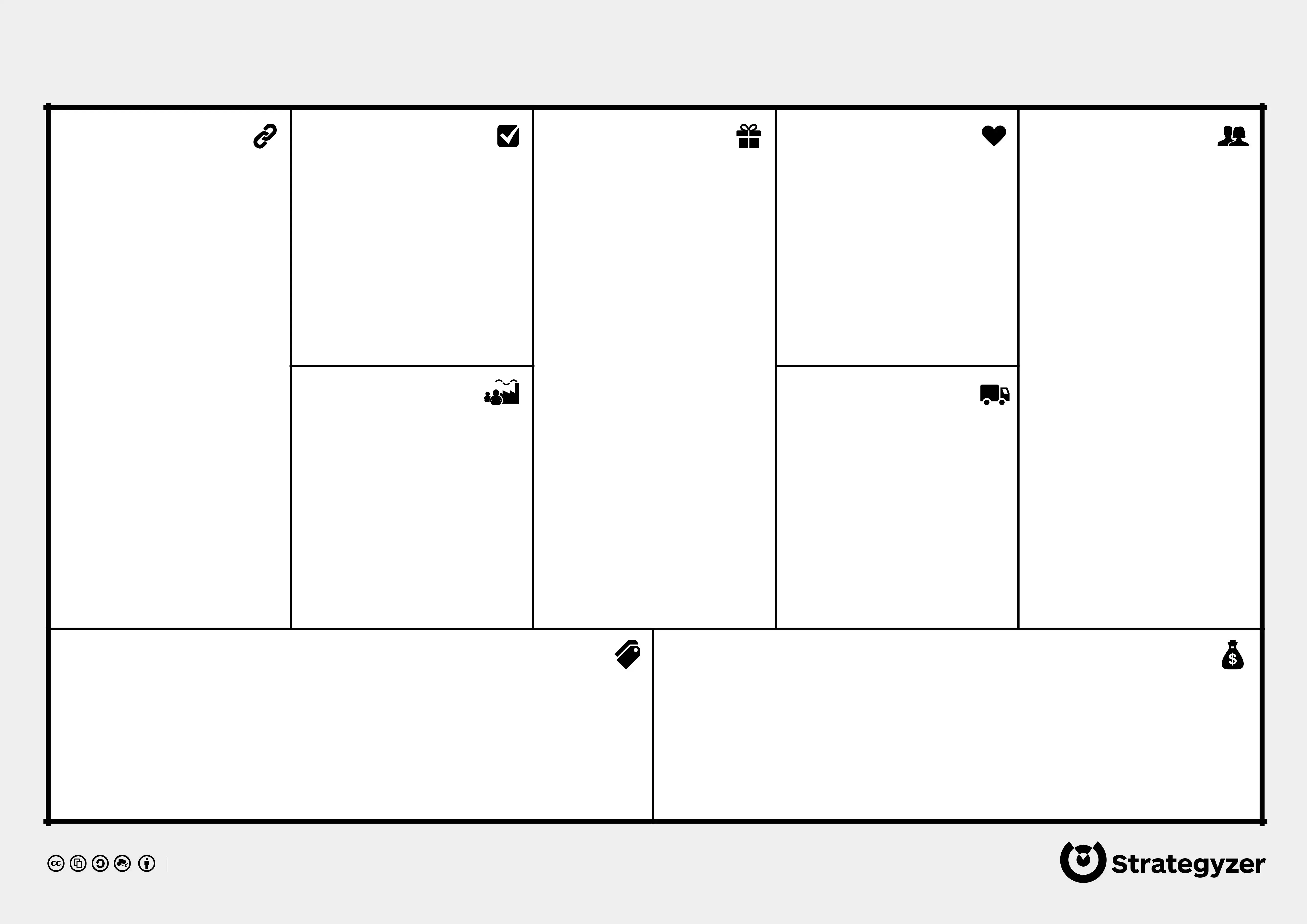The Business Model Canvas Editable form is a practical tool that helps individuals and organizations visualize and develop their business models. It consists of nine building blocks that cover key aspects of a business, including key partners, key activities, key resources, value propositions, customer relationships, channels, customer segments, cost structure, and revenue streams.
Who can benefit from using the Business Model Canvas?
Various individuals and organizations can benefit from the Business Model Canvas. Entrepreneurs and startups may use it to outline their business ideas and strategies. Established businesses might find it useful to assess and refine their existing models. Nonprofits and social enterprises can also leverage this tool to identify how they create and deliver value to their stakeholders.
Filling out the form begins with identifying the key elements of your business model. Each section prompts you to answer specific questions:
-
Key Partners:
List who your partners and suppliers are.
-
Key Activities:
Define what activities are essential to delivering your value propositions.
-
Key Resources:
Identify the resources necessary for your business operations.
-
Value Propositions:
Articulate the value you provide to customers.
-
Customer Relationships:
Describe the type of relationship each customer segment expects.
-
Channels:
Determine how you will reach your customers.
-
Customer Segments:
Identify who your target customers are.
-
Cost Structure:
Assess the costs associated with your business model.
-
Revenue Streams:
Analyze how your business generates income.
Can the Business Model Canvas be changed or updated easily?
Yes, the Business Model Canvas is designed to be flexible. Users can easily modify and update their entries as their businesses evolve. This adaptability allows for continuous learning and innovation, encouraging users to revisit their assumptions and modify their strategies accordingly.
How does the Business Model Canvas help in understanding customer segments?
The canvas prompts businesses to specifically define their customer segments. By identifying distinct groups of customers, businesses can tailor their products, services, and marketing strategies to meet the unique needs and preferences of each segment. This can lead to more targeted and effective business strategies.
There are various types of revenue streams that can be included in the Business Model Canvas. Some examples are:
-
Asset sales
-
Subscription fees
-
Licensing
-
Usage fees
-
Advertising
Understanding and identifying these streams is crucial for a business’s financial health.
It is common to encounter uncertainty when developing a business model. Use the Business Model Canvas as a living document that evolves. Engage in discussions with stakeholders, conduct market research, and brainstorm potential answers. This process can provide insights and drive clarity over time.
Is the Business Model Canvas suitable for all types of businesses?
The Business Model Canvas is versatile and can be used across various industries and business types. From small startups to large corporations, including nonprofit organizations, the canvas aids in simplifying complex business concepts into an easily digestible format.
Where can I find more resources or support for using the Business Model Canvas?
Many resources are available for those seeking to learn more about the Business Model Canvas. The official website,
strategyzer.com
, offers articles, tools, and case studies. Additionally, workshops and online courses are available that teach the principles of the canvas in practical applications.

